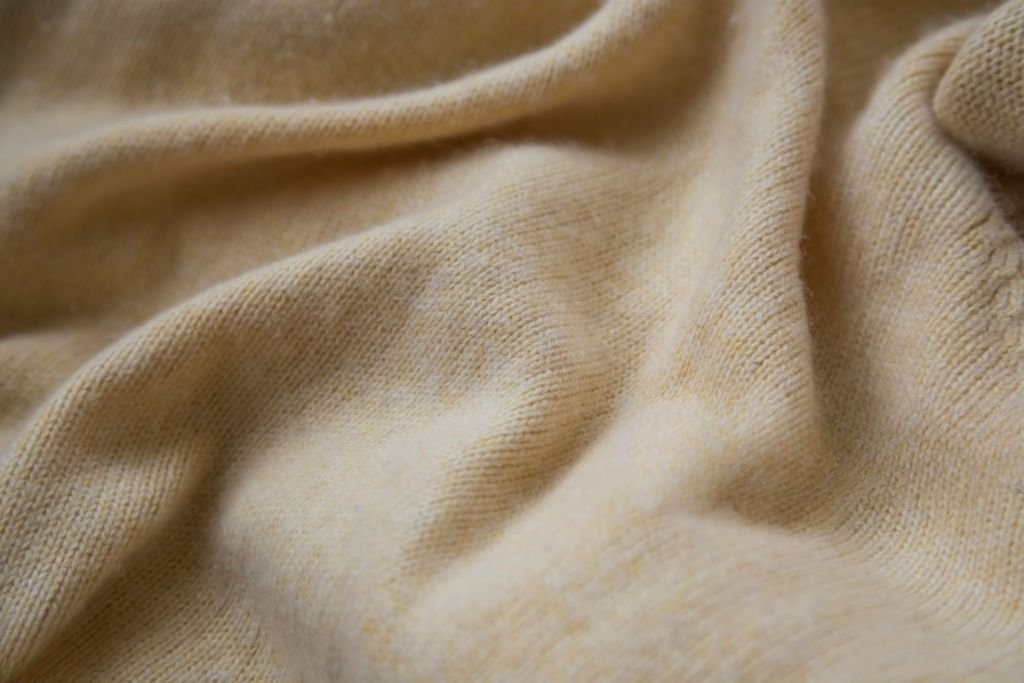The Natural Fiber Hierarchy: What Your Skin Actually Wants

100% Organic Cotton: The Foundation
Conventional cotton uses more pesticides than any other crop, 25% of global pesticide use to be exact. Organic cotton? Zero synthetic pesticides, herbicides, or fertilizers.
My personal obsession is Mate the Label, 100% organic cotton basics that feel like wearing clouds. Their tees, loungewear, and undergarments are made from GOTS-certified organic cotton with non-toxic dyes. I have done everything in their activewear line from hikes through jungles to pilates. No compromises, just pure comfort.
Linen: The Breathable Powerhouse
Flax plants (which become linen) naturally resist pests, requiring minimal chemicals even in conventional farming. But organic linen? That's next-level breathability and durability.
- Naturally antimicrobial and moisture-wicking
- Gets softer with every wash (unlike synthetic blends that pill and degrade)
- Biodegradable, won't sit in landfills for centuries
- Temperature regulating—perfect for Austin summers
Merino Wool: Nature's Performance Fabric
Forget synthetic "moisture-wicking" fabrics. Merino wool naturally regulates temperature, resists odor, and feels incredible against skin without any chemical treatments.
- Temperature regulation in both hot and cold weather
- Natural antimicrobial properties (you can wear it multiple times without washing)
- Biodegradable and renewable resource
- Doesn't retain odors like synthetic fabrics
Alpaca: The Luxury That's Actually Sustainable
Alpaca fiber is naturally hypoallergenic, softer than cashmere, and doesn't require harsh processing chemicals. Plus, alpacas are gentle on pastureland.
Why alpaca?
- No lanolin (the natural oil that can irritate sensitive skin)
- Stronger and durable
- Naturally water-resistant and flame-resistant
Cashmere: When Quality Trumps Quantity
Real cashmere from ethically-raised animals and no harsh chemicals, is an investment piece that'll last decades. The key is buying from transparent brands that prioritize animal welfare and environmental responsibility.
Sustainable cashmere sources:
- Naadam (direct trade with herders, no middlemen)
- Cuyana (minimal processing, investment pieces)
- Brunello Cucinelli (incredible philanthropic ventures, proven ethics and quality)
- Vintage cashmere (often higher quality than modern fast fashion versions)
Building a Non-Toxic Capsule Wardrobe
Quality over quantity isn't just minimalist philosophy, it's health strategy. Here's how to build a wardrobe that supports your wellness using a simple foundation of a few key pieces.
- 3-5 organic cotton basics (tees, tanks, underwear)
- 2-3 organic cotton or linen button-downs
- 1-2 organic cotton or linen dresses (women)
- 1-2 merino wool sweaters
- 1 quality alpaca or cashmere investment piece
- Organic cotton or linen pants/skirts in neutral colors
The cost breakdown:
- Budget approach: $300-500 for complete basics overhaul (Pact, Organic Basics)
- Mid-range: $600-1000 (mix of Mate the Label, Everlane, quality basics)
- Investment: $1000+ (premium organic, artisan pieces, heirloom-quality items)
Cost per wear math: A $120 organic cotton dress worn 100 times = $1.20 per wear A $25 synthetic dress that pills after 10 wears = $2.50 per wear Plus, you're not absorbing chemicals every time you wear the organic option.
Care That Extends Life (And Protects Your Investment)
Non-toxic clothing care means your pieces last longer and stay chemical-free:
Washing without toxins:
- Branch Basics or Dr. Bronner's instead of traditional detergent (no synthetic fragrances or optical brighteners)
- White vinegar as natural fabric softener
- Air dry when possible (heat breaks down natural fibers faster)
- Wool wash for merino and cashmere (Eucalan or Soak brand)
Storage that preserves:
- Cedar blocks instead of moth balls (no paradichlorobenzene chemicals)
- Breathable cotton garment bags, not plastic
- Avoid wire hangers that can leave rust stains
The Bottom Line
Your skin doesn't distinguish between what you eat and what you wear, it absorbs both. When you choose clothing made from organic, naturally-processed fibers, you're making the same health choice as buying organic food.
Yes, quality natural fiber clothing costs more upfront. But cost per wear? You're actually saving money while avoiding a daily dose of synthetic chemicals. Plus, natural fibers look better, feel better, and last longer than their petroleum-based counterparts.
Your wardrobe should be an extension of your wellness routine, not the saboteur of it. Every morning when you get dressed, you're choosing what to put your largest organ in contact with for the next 12+ hours. Choose wisely.
Ready to detox your closet? Start with one category, replace your underwear and sleep clothes first (you're in contact with them the longest), then build from there




%201.svg)




